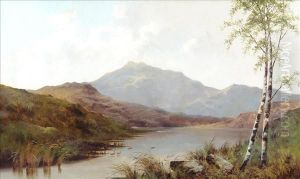Samuel John Barnes Paintings
Samuel John Barnes was a British artist whose work spanned the late 19th and early 20th centuries, offering a glimpse into the transitional period of British art from the Victorian era into the modern age. Born in 1864, Barnes was part of a generation that witnessed and contributed to significant shifts in the art world, navigating through the challenges and opportunities presented by the changing tastes and technological advancements of his time.
Barnes's artistic journey began at a young age, showing an early interest in drawing and painting. He pursued formal education in the arts, studying at prestigious institutions that were instrumental in shaping his technical skills and artistic sensibilities. These formative years were marked by rigorous training in traditional techniques, yet Barnes was also exposed to the emerging trends that questioned and expanded the boundaries of artistic expression.
Throughout his career, Samuel John Barnes worked in a variety of mediums, including oil painting, watercolor, and etching. His subjects ranged from landscapes and seascapes to portraits and genre scenes, reflecting a versatility and adaptability to different styles and themes. Barnes's work is often characterized by a keen observation of light and atmosphere, capturing the subtle nuances of his subjects with a delicate touch and attention to detail.
Barnes's contribution to the art world was recognized by his contemporaries, and he participated in numerous exhibitions throughout his lifetime. His work was exhibited in prestigious galleries and institutions, earning him a respectable place among his peers. Despite this, Samuel John Barnes is not as widely known today as some of his contemporaries, a fate not uncommon among artists of his time.
The later years of Barnes's life were dedicated to passing on his knowledge and passion for art to a new generation of artists. He was involved in education, teaching at art schools and sharing his experiences and insights gained over a lifetime of artistic practice. Samuel John Barnes passed away in 1955, leaving behind a legacy that, while perhaps not as celebrated as that of some of his contemporaries, offers a rich and nuanced perspective on a pivotal period in British art history.
























